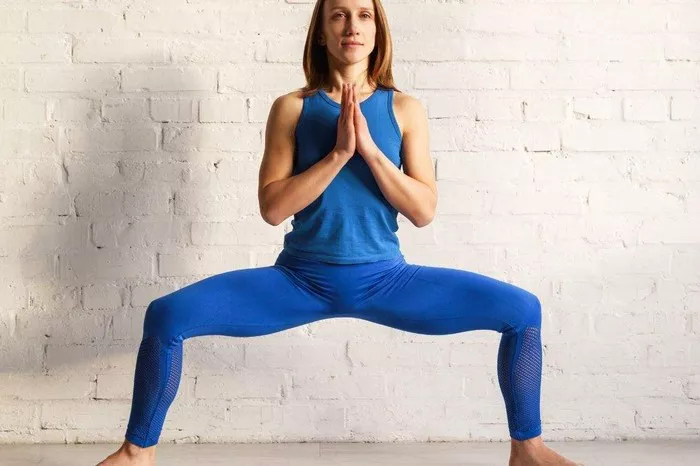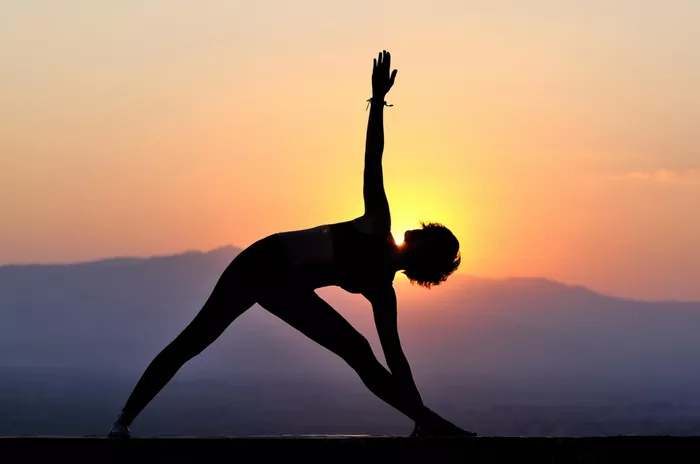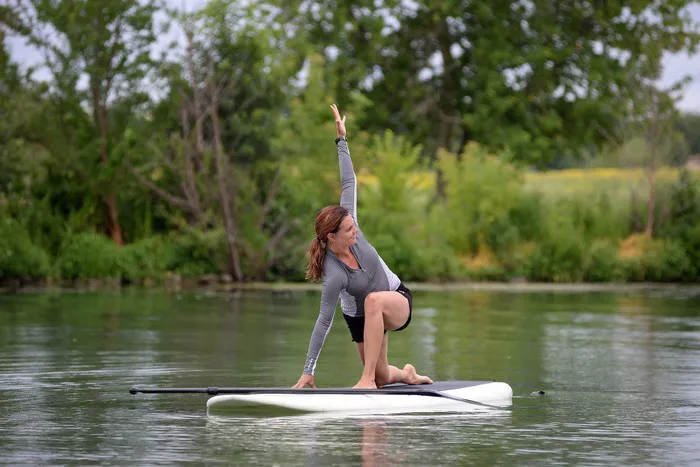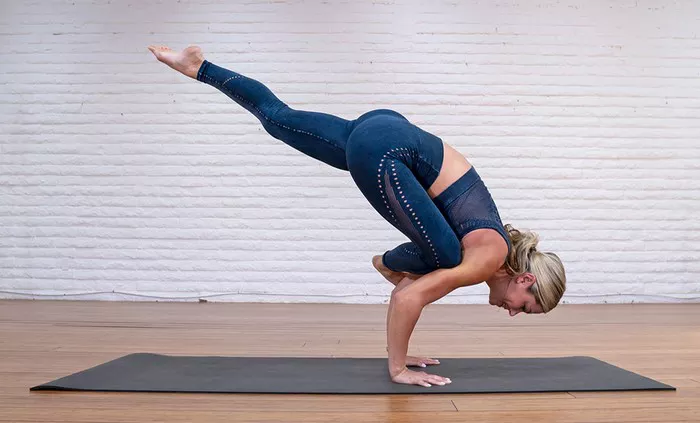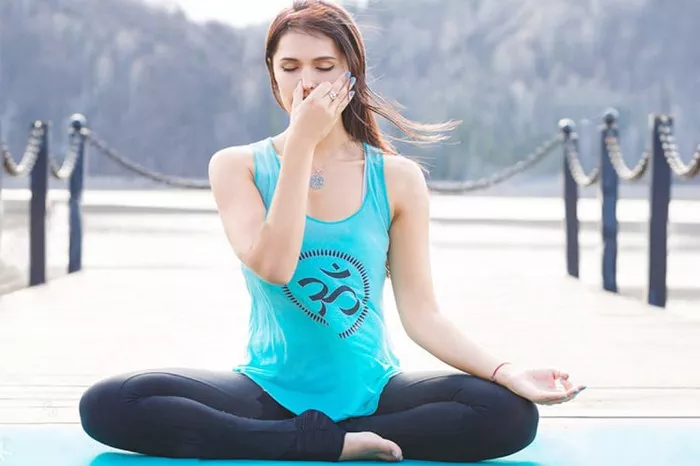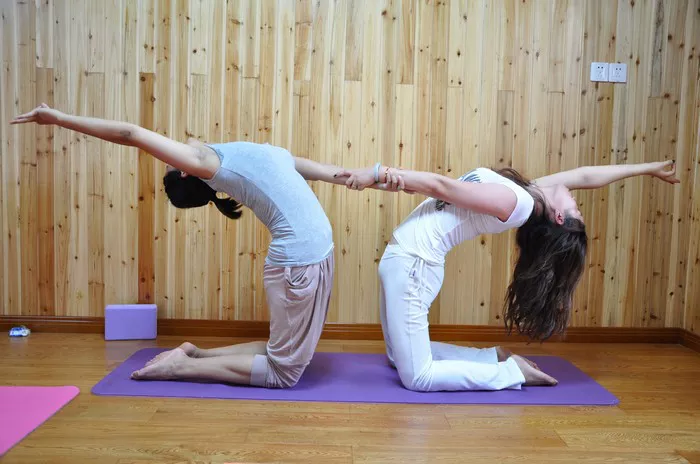Yoga, an ancient practice rooted in the depths of Indian philosophy, offers a plethora of postures that not only strengthen the body but also uplift the spirit. Among these, Goddess Pose stands out as a symbol of strength, grace, and divine feminine energy. In this comprehensive guide, we delve into the origins, benefits, variations, instructions, and precautions associated with this empowering asana.
Origins and Symbolism
Goddess Pose, or Utkata Konasana in Sanskrit, derives its name from two sources: “Utkata,” meaning powerful or fierce, and “Kona,” signifying angle. This asana embodies the strength and dignity attributed to the divine feminine energy in Hindu mythology, often depicted in the form of goddesses like Durga or Kali.
The posture symbolizes empowerment, resilience, and the ability to tap into one’s inner strength. Its wide-legged stance represents stability and grounding, while the deep bend in the knees signifies surrender and openness. Practicing Goddess Pose invites practitioners to embody the qualities of a goddess, fostering a sense of confidence and inner radiance.
Physical and Mental Benefits
Goddess Pose offers a myriad of physical and mental benefits, making it a valuable addition to any yoga practice:
1. Strengthens the Lower Body: The wide stance and deep squat engage the quadriceps, hamstrings, glutes, and inner thighs, promoting muscle strength and endurance.
2. Improves Hip Flexibility: The wide-legged stance and deep hip opening help increase flexibility in the hips and groin, enhancing mobility and reducing stiffness.
3. Tones the Core: Maintaining the upright posture in Goddess Pose requires activation of the core muscles, leading to improved abdominal strength and stability.
4. Opens the Heart and Chest: The expansive arm position in Goddess Pose stretches the chest and shoulders, counteracting the effects of hunching and promoting better posture.
5. Boosts Confidence and Self-Esteem: The empowering nature of the pose encourages practitioners to stand tall and embody their inner strength, fostering a sense of confidence and self-assurance.
On a mental and emotional level, Goddess Pose helps release tension and stress stored in the body, promoting a sense of inner calm and balance. Its grounding nature helps center the mind and cultivate mindfulness, allowing practitioners to connect with their breath and innermost selves.
Variations and Modifications
While Goddess Pose is inherently accessible to most practitioners, variations and modifications can be introduced to accommodate different body types and levels of flexibility:
1. Arm Variations: Experiment with different arm positions, such as cactus arms (bent at 90-degree angles) or prayer hands at heart center, to explore variations in shoulder and chest opening.
2. Foot Placement: Adjust the distance between the feet to find a comfortable stance that allows for stability and balance.
3. Props: Place a yoga block under the sit bones for added support and lift, especially if experiencing discomfort or tightness in the hips.
4. Wall Support: Use a wall for support if balance is challenging, gently pressing the back against the wall while maintaining the squat position.
5. Dynamic Movement: Incorporate dynamic movements such as pulsing up and down in the squat position or swaying side to side to deepen the stretch and increase blood flow to the muscles.
By exploring these variations and modifications, practitioners can tailor Goddess Pose to suit their individual needs and gradually progress in their practice.
Step-by-Step Instructions
Follow these step-by-step instructions to practice Goddess Pose with proper alignment and mindfulness:
1. Starting Position: Begin standing at the top of your mat with feet hip-width apart, arms relaxed by your sides, and spine tall.
2. Wide Stance: Step your feet wide apart, about 3-4 feet distance, toes pointing slightly outward.
3. Engage the Core: Draw the navel in towards the spine to engage the core muscles, maintaining a strong and stable center.
4. Bend the Knees: Exhale as you bend both knees, lowering your hips towards the ground into a deep squat position. Keep the knees tracking over the ankles, avoiding any inward collapse.
5. Open the Arms: As you sink deeper into the squat, extend both arms out to the sides at shoulder height, palms facing forward.
6. Find Stability: Press firmly through the outer edges of the feet and inner thighs to maintain stability and balance in the pose.
7. Lengthen the Spine: Keep the spine long and upright, drawing the shoulder blades down the back and lifting through the crown of the head.
8. Hold and Breathe: Hold the pose for 5-10 breaths, breathing deeply and evenly to cultivate a sense of presence and awareness.
9. Exit the Pose: To release, straighten the legs, bring the arms back to your sides, and step the feet back together at the top of your mat.
Precautions and Contraindications
While Goddess Pose offers numerous benefits, it’s essential to practice with mindfulness and respect for your body’s limitations. Here are some precautions and contraindications to consider:
1. Knee Issues: Avoid or modify Goddess Pose if you have knee injuries or discomfort. Instead, opt for a less intense hip-opening posture like Bound Angle Pose (Baddha Konasana).
2. Lower Back Pain: If you experience lower back pain, support the spine by placing hands on hips or using props such as a yoga block under the sit bones.
3. Pregnancy: Pregnant individuals should practice Goddess Pose with caution, avoiding deep squats and maintaining a comfortable stance to accommodate the growing belly.
4. High Blood Pressure: Those with high blood pressure should avoid holding the breath or straining in the pose, opting for gentler variations or practicing under the guidance of a qualified yoga instructor.
5. Ankle Instability: Individuals with ankle instability should be cautious when transitioning into and out of the squat position, ensuring proper alignment and support through the feet.
Always listen to your body and honor its feedback during your yoga practice. If you experience any pain or discomfort beyond the normal sensation of stretching, ease out of the pose and consult with a yoga teacher or healthcare professional.
Conclusion
In conclusion, Goddess Pose serves as a powerful embodiment of strength, grace, and feminine energy in the yoga practice. By exploring its origins, benefits, variations, instructions, and precautions, practitioners can deepen their understanding and experience of this empowering asana, unlocking its transformative potential on and off the mat. Through dedicated practice and mindful awareness, may we all embody the radiant essence of the goddess within.

